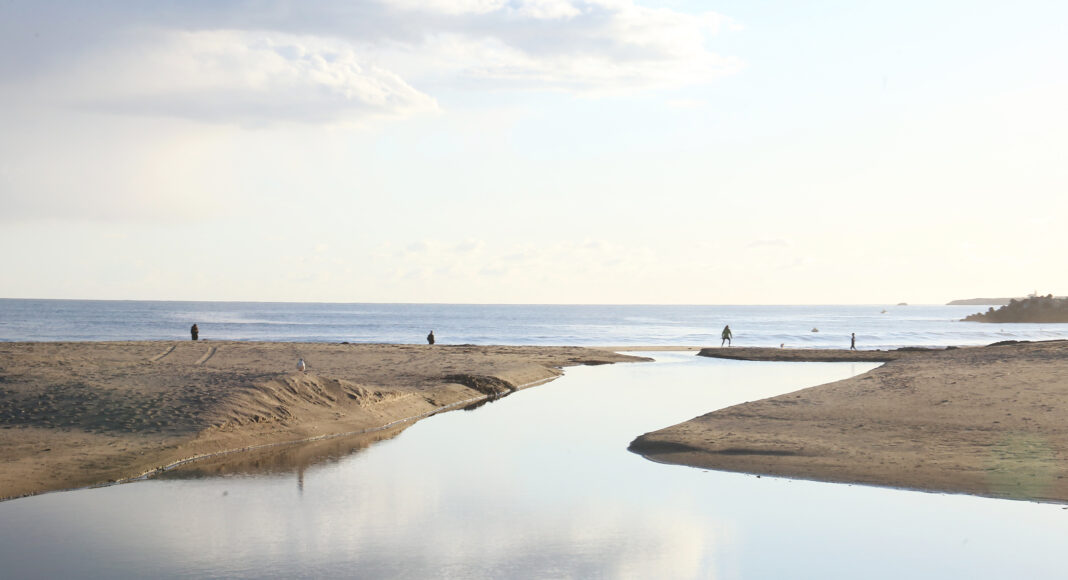I met Rick Logonotti at one of his “Desal Alternatives” events around 6 years ago. I have spent my entire life as an avid environmentalist, who happened to be a Civil Engineer. It was God’s calling for me to design environmentally friendly water infrastructure.
I opposed desalination because it does have the ability to produce an unlimited amount of water, which meant unlimited growth. So I created a recycled water plan. Recently, I ran into Becky Steinbrenner, who supported this plan, and she thought I should re-package it again for the Good Times. This plan did not get traction with SQCWD’s Board. I made a big change to it which would lower the cost significantly, and would use a portion of the new “Purewater Project,” specifically the Treatment Plant.
Listening to Bruce Daniels speak at a groundwater meeting a couple of years ago, he made the very bleak prediction of fewer but more intense rainstorms due to climate change. Moreover, he went into detail that a large percentage of this water will not return into the groundwater basin. We had the lowest amount of rainfall in recorded history last season. God forbid we are not headed into a 6+ year drought, which is entirely possible, according to Dr. Daniels.
I did not like the Purewater Plan because it only recycles less than 15% of the wastewater, and a pipeline to bring the water to the plant is expensive to install because it is in city streets. The majority of people prefer a bike path over the “Rail + Trail,” so a cost effective, large diameter pipeline could go in the rail corridor using 100% of the 6 to 10 million gallons per day (mgd) of water currently polluting the bay.
Purewater also has it wrong because it uses the method called Indirect Potable Reuse (IPR). The expensively treated water is injected back into the ground when it is cleaner than bottled water. The good news is they can simply abandon the injection wells, and connect this plant to the distribution system, and this is called Direct Potable Reuse (DPR).
For those unfamiliar, wastewater treatment plants do not “treat” water. They contain the water for a period of time, so that it’s not exposed to people and animals. This enhances bacterial growth, which does the treatment. Raw sewage in the ground will become clean water in six months. Bacteria will break down any organic molecules into basic elements, i.e. carbon, nitrogen, oxygen and hydrogen. Saltwater has around 30 parts per million (ppm) of chemicals that need to be filtered. Secondary treated sewer water on the other hand, only has less than 1 ppm, which continues to be removed by bacterial action. These organic chemicals are easily filtered by reverse osmosis, and the backwash can be disposed of back in the sewer system.
I’m a pipeline contractor engineer/estimator, and we call pipeline projects in open space “Blow and Go” jobs because you don’t have the costs of utility crossings, traffic control, and pavement removal and replacement. You can also use a large trenching machine, which can open a ditch up very fast. This pipeline can go all the way to the Watsonville wastewater plant, where they also have water they can contribute. All this water would go to injection wells, say, every 100 feet.
An injection well is basically a normal well, only the casing is pressurized with water. You can modify a production well, which there are many existing ones near the rail corridor, by simply welding a steel plate on the top of the casing pipe.
I’m sure many of you are saying that you cannot inject sewage water into the ground, because it will contaminate nearby production wells. You’re right. Actually, regulations say you have to be over 6 miles away from a production well to inject recycled water. However, we have a unique situation here that should allow for a variance to the regulations.
Our groundwater basin faces the ocean. All fresh water seeps one direction, towards the ocean. This is because the freshwater level is always higher than sea level, so the water pressure pushes it out to sea. Any water injected into the ground near the ocean will not seep inland. It’s basic physics. Every single drop of this water will block a drop of freshwater from seeping out to the ocean. It’s like a liquid barrier, containing our precious fresh water. This plan absolutely guarantees that the county will never have saltwater intrusion. We are talking about 12 to 20 mgd of freshwater being saved. And if we need more water, the planned Deep Water Desal Plant is only six miles away through farmland from Watsonville.
Obviously, this will cost more money, but think of it like insurance, and you get a spectacular bike path! In reality, this is a conservation plan; it’s conserving the freshwater so that it will never get wasted out to sea. If there is a 6+ year drought, it will be a bargain, because saltwater intrusion would be catastrophic.
Bill Smallman, P.E. | Former Water Director at SLVWD
This letter does not necessarily reflect the views of Good Times.To submit a letter to the editor of Good Times: Letters should be originals—not copies of letters sent to other publications. Please include your name and email address to help us verify your submission (email address will not be published). Please be brief. Letters may be edited for length, clarity and to correct factual inaccuracies known to us. Send letters to le*****@go*******.sc .












